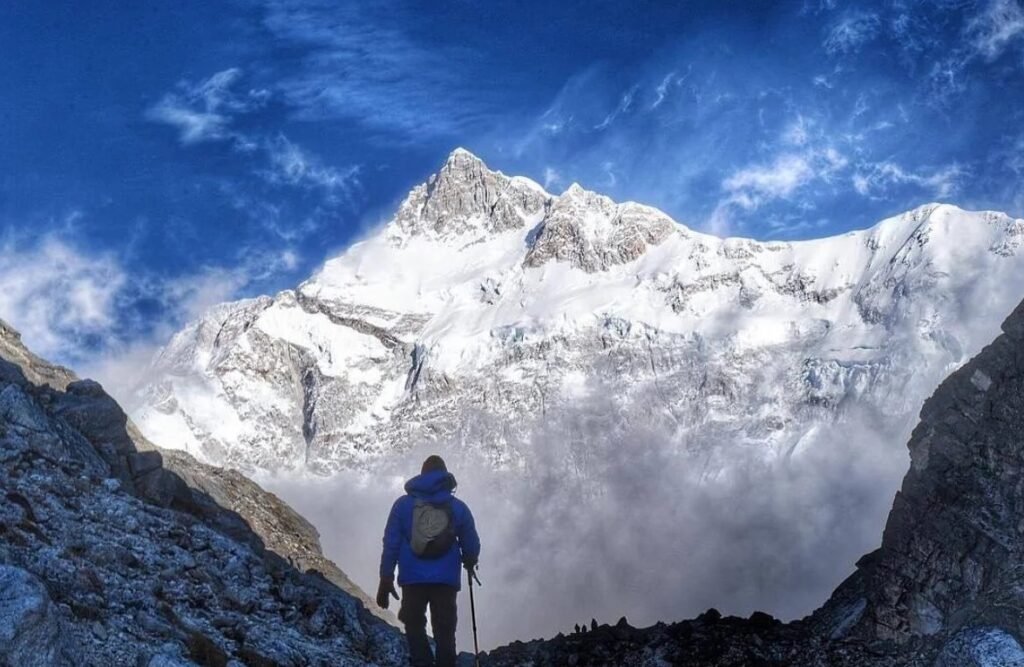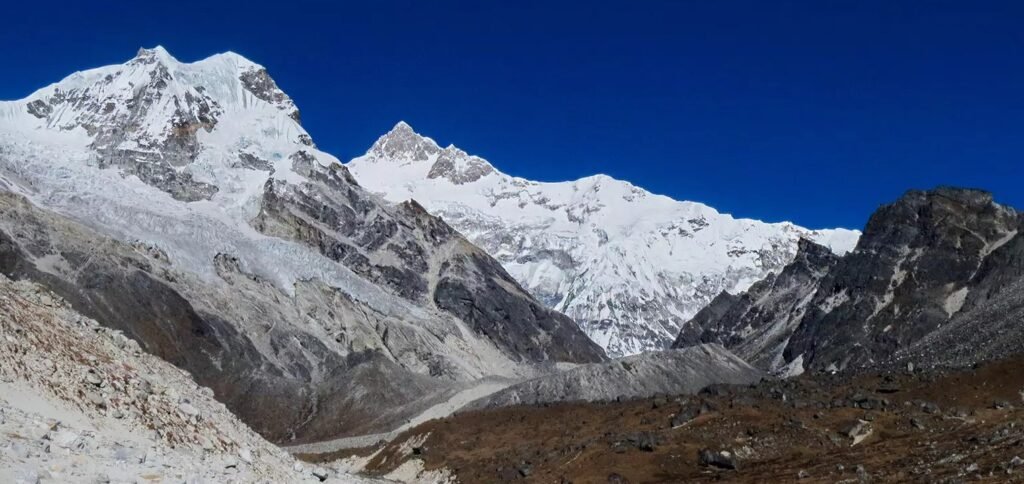The Goechala trek is among India’s most breathtaking and challenging Himalayan adventures. Set in the pristine wilds of Sikkim, this trek takes you to the lofty Goecha La pass with panoramic views of Kanchenjunga, the world’s third-highest peak. This in-depth guide covers everything you need: the trek’s history, culture, economy, natural beauty, trip planning, popular personalities, essential landmarks, and insider FAQs to help you plan your perfect adventure.
What is the Goechala Trek?
The Goechala trek is a high-altitude trekking expedition in western Sikkim, India. Typically lasting 8-11 days, it covers 70–90km round-trip, starting and ending at Yuksom. Trekkers journey through dense forests, river valleys, rhododendron meadows, glacial lakes, and high alpine landscapes, all culminating in jaw-dropping views of Kanchenjunga and other towering peaks like Pandim, Rathong, and Kabru.

General Trip Charges and Trek Packages (2025)
Trek costs depend on your comfort level, trek operator, and group size. Here’s a guide to current Goechala trek prices:
| Package Type | For Indian Nationals | For Foreign Nationals | Features Included |
| Budget (trek only) | ₹19,500–32,800 | ₹42,800+ | Basic trek package, guide, meals, permits, and tenting |
| Standard (incl. hotels) | ₹49,900 | ₹59,900 | Extra nights at Yuksom, all essentials |
| Premium (all-inclusive) | ₹84,500 | ₹94,500 | Top-tier hotels, Yuksom transfers, portage, privacy |
- Local Trekking Permits: Included in major packages. Independently: ₹700–800 extra.
- Extra Add-ons: Private tents (~₹250/night), personal porters, extra yaks (~₹300–500/day), taxi pickup NJP, Yuksom (cost varies).
- Solo Trekkers: More expensive due to minimum group size tariffs.
- International Guests Must pay higher fees for permits and porters.
- Miscellaneous: Meals before/after trek, insurance, and return transport to NJP/Bagdogra (nearest rail/airport) are often billed separately.
- Starting Point: Yuksom (1,780m / 5,840ft)
- Highest Point: Goechala Viewpoint 1 (approx. 4,600m / 15,100ft)
- Duration: 8–11 days
- Difficulty: Moderate to Difficult
Pro Travel Tips for Goechala Trek
- Acclimatise at Dzongri: Never skip the acclimatisation day; altitude sickness is a real risk.
- Pack for All Weather: Rain and snow can strike without warning. Ensure waterproof and warm layers.
- Travel Insurance: Essential, including helicopter evacuation.
- Respect Local Culture: Always follow leave-no-trace practices and respect Buddhist monasteries and prayer sites.
- Fitness Prep: Prepare with regular long-distance hiking, stair climbing, and cardiovascular exercises.
The History of Goechala Trek
Before the trekking boom, this route was used by Sikkimese herders, mainly the Lepcha, Bhutia, and Limbu communities, to move cattle to summer pastures in the high Himalayas. The Goechala trail first gained international attention during British colonial expeditions in the 19th and early 20th centuries. Locals guided British explorers and surveyors into the eastern reaches of Kanchenjunga.
- In 1979, French mountaineer Pierre Noire popularised the trail for modern trekkers. Since then, it has welcomed hundreds of mountaineering expeditions (notably to the Kanchenjunga base camp) and adventure travellers seeking Himalayan grandeur adjoining the sacred mountain.
- The Sikkimese government later introduced permits and eco-tourism regulations to protect this fragile alpine ecosystem. Today, the route is part of the core zone in the Kanchenjunga National Park, a UNESCO World Heritage Site.
The Culture, Economy, and Population: Yuksom and the Trek Corridor
Yuksom, the base for most Goechala treks, is a small heritage town nestled in West Sikkim. It holds immense historical and spiritual significance for Sikkim:
- Culture: Yuksom was the first capital of Sikkim and the coronation site of its first king in 1642. The town is dotted with ancient monasteries, chortens (stupas), and sacred lakes; it serves as a gateway for pilgrims and trekkers alike.
- Population: While the town itself is home to a few thousand people, the entire trek route is sparsely inhabited, save for tiny villages and seasonal camps. Local communities include the Lepchas, Bhutias, and Nepalese-origin families.
- Economy: Trekking and eco-tourism are vital to the local economy. Villagers offer homestays, guiding services, porters, kitchen help, mule/yak rentals, and supply shops. The trek’s popularity has uplifted the standard of living across the region, while tourism rules ensure sustainability and fair employment.
Beautiful Places & Must-Visit Landmarks Along the Goechala Trek
The magic of Goechala lies in its ever-changing landscapes and spectacular sights. Here are the major highlights:
| Landmark | Elevation | Why Visit? |
| Yuksom | 1,780m | Historic Sikkimese capital, Buddhist shrines, lively bazaars |
| Sachen | 2,180m | Forested campsite, lush Himalayan flora |
| Tshoka | 2,950m | Rhododendron forests, first snowy views of Pandim |
| Dzongri & Dzongri Top | 4,000m/4,200m | Panoramic sunrise spot for Kanchenjunga’s golden peaks |
| Thangsing | 3,800m | Peaceful meadows beneath Mt. Pandim |
| Lamuney | 4,200m | Last overnight camp before the summit push |
| Samiti Lake | 4,300m | Famous turquoise alpine lake, with mirror reflections of mountains |
| Goechala Viewpoint | 4,600m | Final destination, the closest viewpoint to Kanchenjunga’s southeast face |
| Kanchenjunga Nat’l Park | varies | UNESCO biosphere, rare wildlife (red panda, tahr, Himalayan birds) |
- Rhododendron Blooms: The trail explodes in pink, purple, and white blossoms each spring (March–May).
- Wildlife: Possible encounters include red pandas, Himalayan tahr, blue sheep, and rare birds.
- Cultural Sites: Ancient Buddhist monasteries and shrines en route reflect Sikkim’s spiritual heritage.
Goechala Trek FAQ
When is the best time to do the Goechala trek?
March–May (rhododendron bloom) and mid-October–December (clear views, chilly nights). Avoid heavy rains from June–September.
How difficult is the trek?
Goechala is moderate to difficult, requiring good stamina, prior trekking experience, and altitude fitness. The days are long, at times steep, and nights can get freezing at high camps.
Do I need permits for the Goechala trek?
Yes! All trekkers (Indian and foreign) need Kanchenjunga National Park permits, Sikkim tourist permits, and registration at Yuksom. Trekking with licensed guides is compulsory.
Can I charge my phone or get a mobile signal along the trek?
No. After Yuksom, there is no mobile/Internet coverage. Power is only available at select homestays (Yuksom/Tshoka). Solar charging helps, but is unreliable at high camp.
What wildlife might I spot?
Goechala is a haven for Himalayan fauna: red pandas, blue sheep, Himalayan black bears, monal pheasants, and dozens of exotic bird species. Always maintain a respectful distance to avoid disturbing wildlife.
What should I absolutely NOT miss on the trek?
- Sunrise from Dzongri Top or Goechala Viewpoint: Kanchenjunga glows orange and gold.
- A night by Samiti Lake: Stars reflected on the water, bookended by silent snow peaks.
- Cultural immersion in Yuksom and traditional Sikkimese food.
Are there any famous personalities from Goechala or this region?
Goechala itself is remote, but Sikkim has produced notable mountaineers (like Sonam Wangyal, the youngest Everest summiter in 1965) and is home to many respected local guides recognised for their expertise in guiding Himalayan expeditions. Prominent recognition has gone to trekker Pushpam Singh, who received a “Spirit of Trekking” award for selflessness and teamwork during a rescue incident on the trail.
Final Thoughts
The Goechala trek remains one of the Himalaya’s iconic journeys—equal parts spiritual, natural, and physical challenge. Whether you go for its wild beauty, cultural history, or adventure, you return changed, carrying the memory of sunrise on Kanchenjunga’s slopes and the spirit of Sikkim’s high mountains.
Quick Reference Table: Goechala Trek at a Glance
| Feature | Detail |
| Highest Point | Goechala Viewpoint 1 (4,600m) |
| Trek Duration | 8–11 days |
| Route | Yuksom–Dzongri–Samiti Lake–Goechala |
| Best Time | Mar–May, Oct–Dec |
| Difficulty | Moderate–Difficult |
| Cost | ₹19,500–84,500+ per person |
| Best Highlights | Kanchenjunga sunrise, Samiti Lake, Dzongri Top |
| Permit Required | Yes (multiple) |
| Local Culture | Buddhist, Lepcha, Bhutia |
| Famous Past Trekkers | Pierre Noire (pioneer), Pushpam Singh (awarded) |
